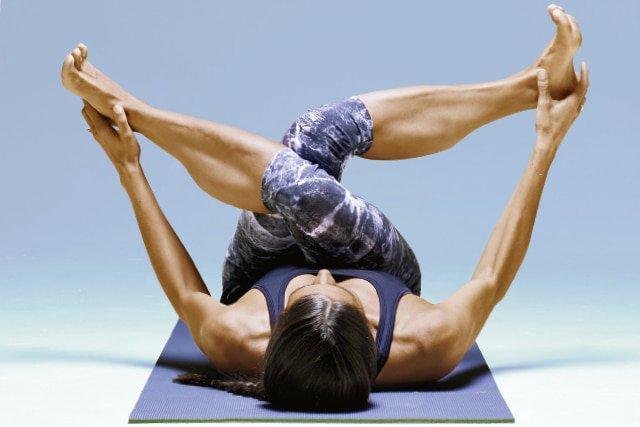
There are many benefits to practicing yoga in the morning. It will improve flexibility and increase happiness. This exercise will improve blood circulation and regulate body temperature. This will allow you to be more productive at work. Try to do yoga every morning. Yoga will not only provide these benefits but it will also lower your chances of developing coronary disease. This condition affects 7.6 millions people around the world.
Reduces stress
Practice yoga in the morning. The benefits of yoga practice in the morning include improved circulation, enhanced immune system, and positive feelings. Morning yoga is especially effective for stress reduction. Yoga will help you get your Vitamin D daily. Yoga also helps with digestion, circulation, stress reduction, and mood. Even if you do yoga once a day you can still make it a part of your morning routine. Even if you already practice yoga regularly, the benefits will continue to be felt the next morning.
It can prepare you for meditation or a busy day at work by practicing yoga in the morning. It helps you get more energy and flexibility. Anxiety tends to be in your hipcreases so you can release tension. It can also help with sleep. Yoga also helps you have a relaxed and calm attitude that will help you get through the day.

Increases flexibility
Yoga is good for flexibility. It can also help improve strength and posture. Yoga requires strength and stamina, which can improve your daily activities. Yoga stretching has many benefits that will make your mornings more enjoyable. Try these simple stretches while you're waiting in line at the grocery store or on the bus.
Flexibility is essential for improving your posture. It is also good for your physical health. A flexible and open body is better for movement and helps to avoid injury. It improves your daily activities, helps you build muscle, and allows for a greater range of motion. Yoga can be a great option if you are prone to injury. Yoga practice can improve flexibility and self-esteem so you feel more confident.
Makes you happier
Yoga can help you improve your physical and mental health. The practice of yoga can help you switch off your sympathetic nervous system, which is responsible for stress and tension, and activate your parasympathetic nervous system, which is responsible for regulating your body's natural healing processes. It can improve your immune system and help you feel more at peace. A few minutes of yoga in the morning will set you up for the day, so that you can be a happier person.
Yoga helps you be more mindful and relieves stress. Yoga can help you feel happier. It helps improve your mental clarity and release negative thoughts. Many people report feeling more relaxed and less stressed after practicing yoga. Some people even claim that yoga helps them overcome self-esteem issues. It's hard not to imagine a better method to start your day than practicing yoga.

Enhances work performance
Your stress levels can be managed by practicing yoga at work. Yoga at work reduces acidity, which makes it less likely that you will experience heartburn. Yoga at work offers many benefits. It improves your energy level and your health. Releasing stress makes you less likely to do counterproductive acts. Stress-free employees are more productive and handle hostility with rationality.
Stressful and monotonous work hours can lead to a reduction in productivity. Unplanned events often affect employees' productivity. Yoga helps employees to focus and stay focused on their tasks. The meditation and breathing techniques can help you relax. They can also improve concentration and decision-making abilities by clearing the mind. It can improve your productivity at work and at home by taking time to do yoga before work.
FAQ
Are yoga mats expensive?
A high-quality yoga mat can be purchased for between $20-$100, depending on its size or material.
Do I need warm up before I do yoga
No. It is not necessary to warm up before you begin a session of yoga.
If your muscles feel stiff or sore after exercising, you can stretch them to loosen them.
Who would be most benefit from yoga?
The target market for yoga is people who want a better quality of life by improving their health and fitness levels. People who wish to improve balance, flexibility, posture, and overall health.
They might also desire to lose weight and gain muscle mass. They might be interested in reducing stress, anxiety, or achieving peace of thought.
Persons with disabilities can have back problems, diabetes, heart disease and high blood pressure. These individuals are particularly benefited by yoga.
Are you able to do yoga with your hands?
It all depends upon the type of yoga. You may need to be flexible in some styles of yoga, while others will help you build muscle strength.
Also, yoga style dictates the level of flexibility required. Beginners may need to only stretch their arms overhead. Intermediate practitioners will need to bend forward and touch the toes. Advanced practitioners may be required to do deep twists and turns.
How long do yoga lessons last?
Yoga classes usually last anywhere from 45 minutes up to 90 minutes. Some teachers offer shorter or longer sessions, at different times during the week.
Statistics
- A 2020 review of 27 studies (1,805 total participants) of yoga interventions in children or adolescents found reductions in anxiety or depression in 70 percent of the studies, with more promising results for anxiety. (nccih.nih.gov)
- According to calorie estimates calculated at Harvard Medical School, the average 125-pound person burns about 120 calories in a half hour of hatha yoga, and a 185-pound person burns about 178 calories in that half hour. (everydayhealth.com)
- Gentle yoga has been shown to ease some of the discomforts of tender, swollen joints for people with arthritis, according to a Johns Hopkins review of 11 recent studies. (hopkinsmedicine.org)
- Lock in 25% off your Founding Member rate. (corepoweryoga.com)
- According to the Agency for Healthcare Research and Quality, falls are incredibly common among older adults in nursing facilities. Even the simplest ones can increase the risk of death (24). (healthline.com)
External Links
How To
Is yoga a good method to lose weight
To answer this question you must first understand what yoga means. Yoga is an ancient form or exercise that originated in India. It was developed by Indian yogis interested in achieving physical fitness and spiritual enlightenment.
Yoga is about strengthening muscles and relaxing the body. The ultimate goal of yoga is to help you relax and let go of all stress and anxiety. Focusing on breathing techniques and meditation are the best ways to do this.
Yoga practice involves various poses (poses) that are designed to strengthen and stretch specific muscles groups. These poses are held for many minutes. They may also involve rhythmic movements such as slow walking, jumping, or moving through mud.
The goal of yoga is not to burn calories but rather to increase one's overall energy level. People who practice yoga can keep a healthy weight.
You'll be amazed at how relaxed you feel when you start practicing yoga. You'll feel happier and sleep better.
Your skin will glow, and you'll look younger.
Many people experience a decrease in blood pressure when they start practicing yoga.
Some studies also show that yoga has been shown to help with depression symptoms.
It's important to note that yoga does not work like other forms of exercise. Instead, yoga increases oxygen circulation throughout the body. This allows the brain relaxes and releases endorphins, which can trigger feelings of happiness or pleasure.
It is important to note that weight loss may be a problem for some people because of their genes. If you're one of these people, it might be best to avoid yoga until you've reached your ideal weight.